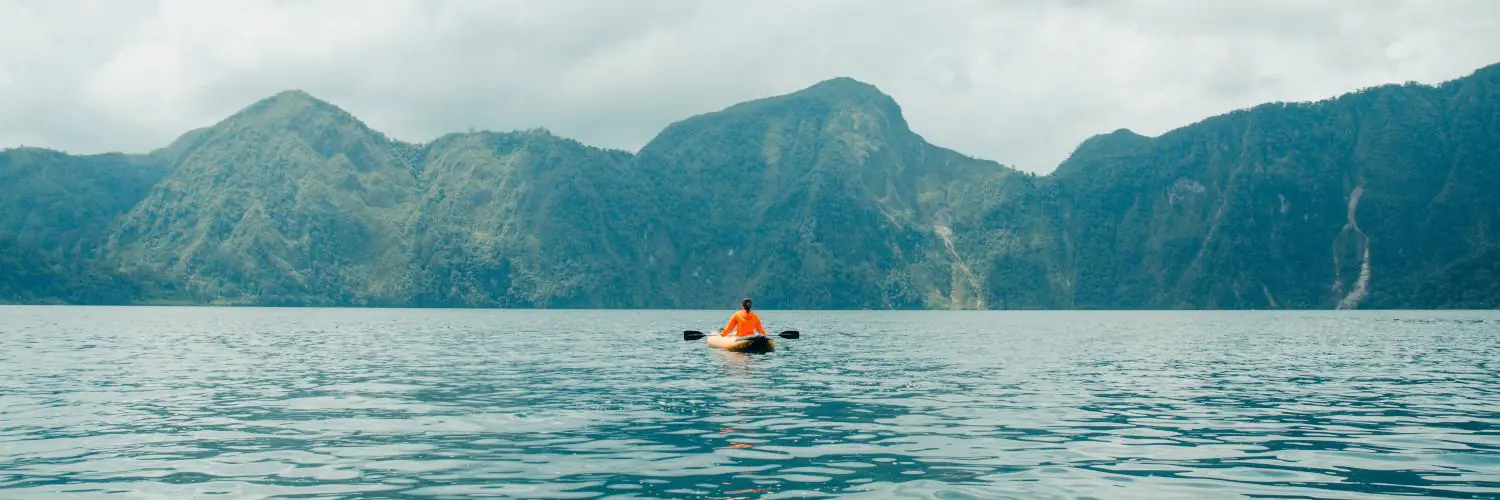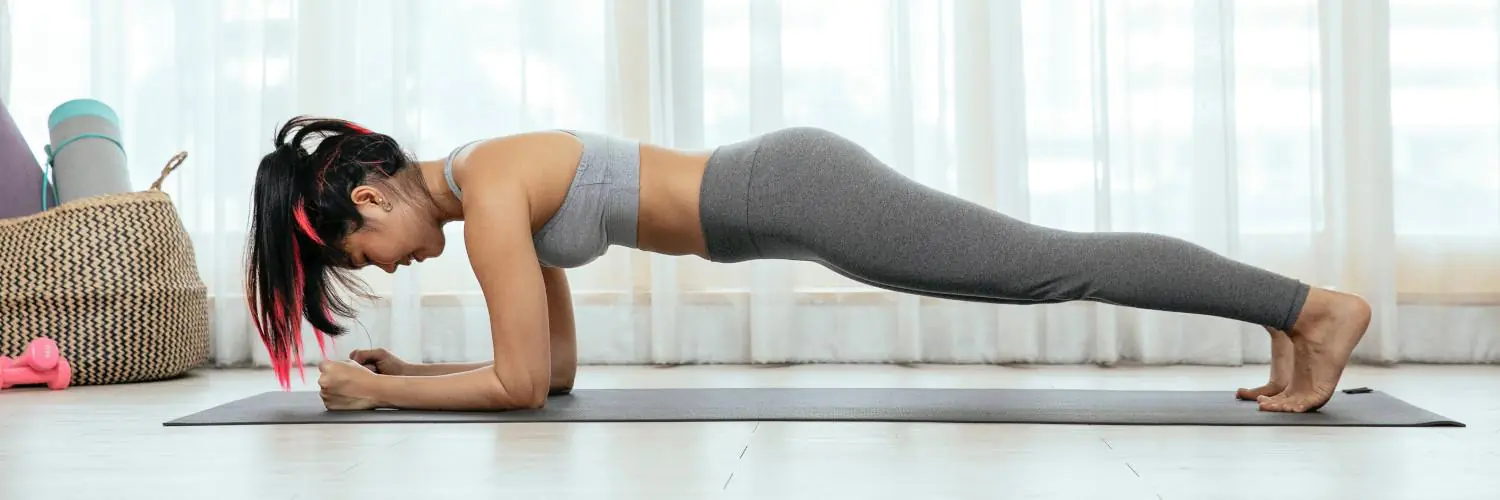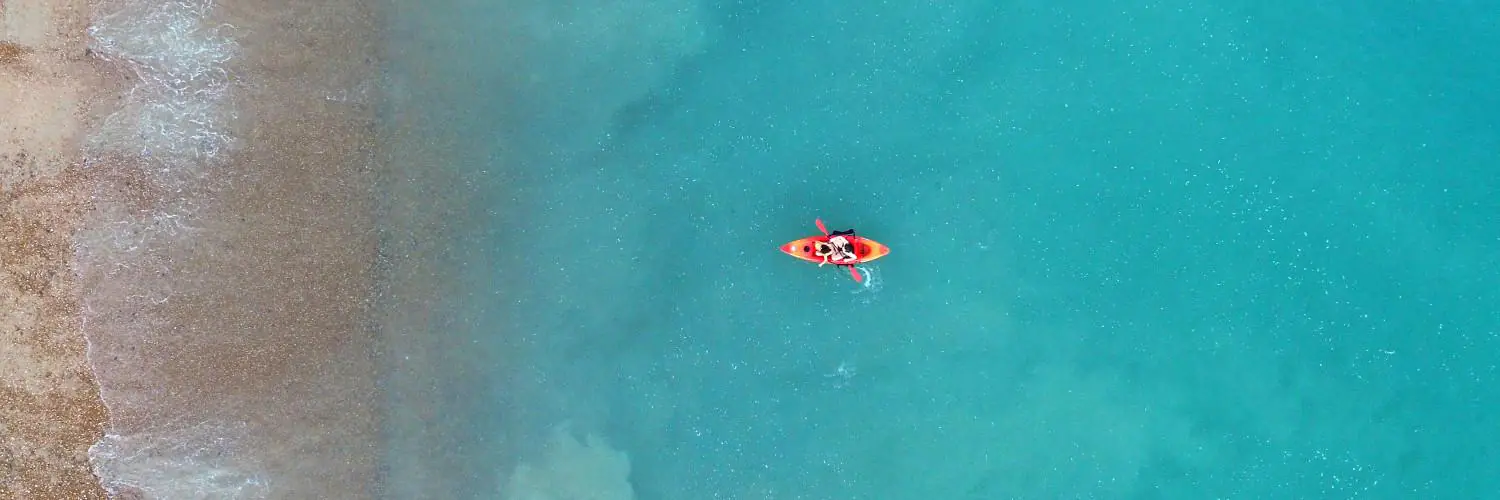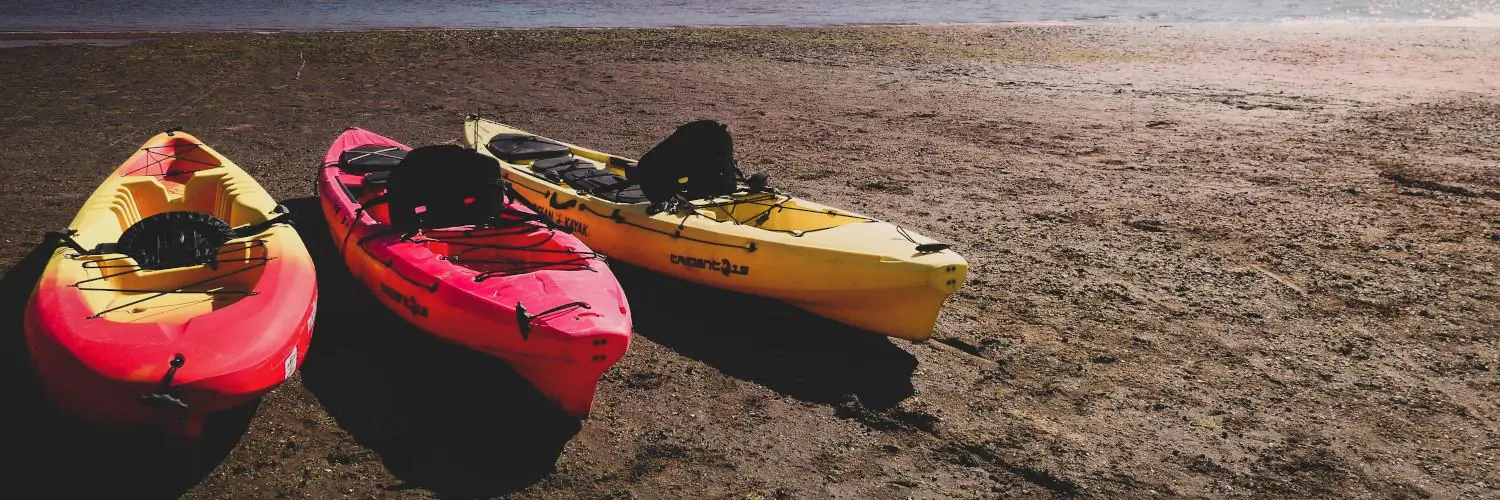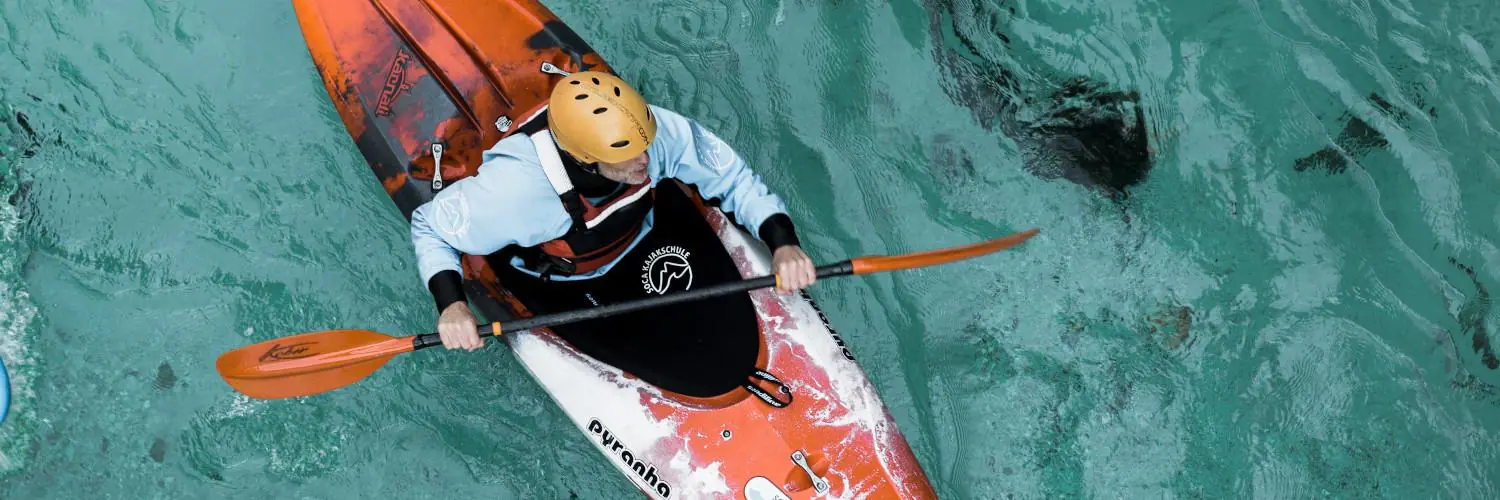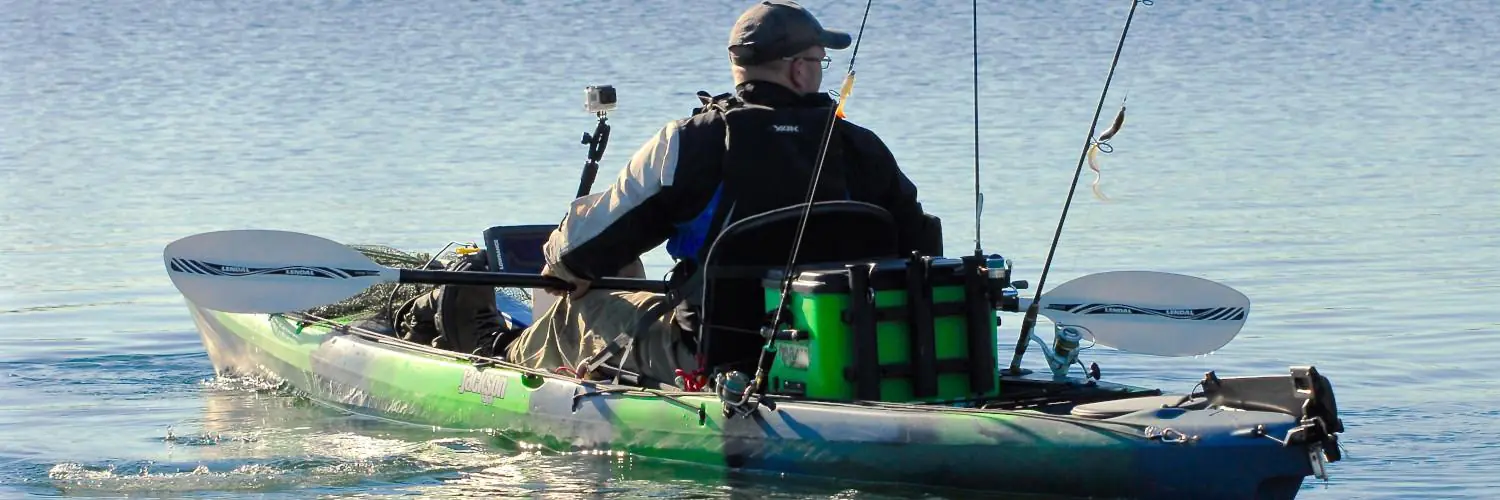Kayaking offers a unique way to explore waterways and connect with nature. This enjoyable outdoor activity combines exercise, relaxation, and adventure. Learning basic kayaking skills allows beginners to safely navigate lakes, rivers, and coastal areas.
Getting started with kayaking is simpler than many people think. The key steps include choosing the right kayak, learning proper paddling technique, and practicing safety procedures. Beginners can learn these fundamentals through guided lessons or by studying instructional resources.
With some preparation and practice, new kayakers can quickly gain confidence on the water. Mastering entry and exit techniques, understanding how to steer, and learning to read water conditions are important early skills to develop. As kayakers progress, they can tackle more challenging routes and try different kayaking styles.
Table of Contents
Choosing the Right Kayak
Picking a kayak involves looking at the different types and key features. This helps you find one that fits your needs and where you’ll paddle.
Understanding Different Types of Kayaks
Kayaks come in several types. Sit-on-top kayaks are wide and stable. They’re good for beginners and warm water. Sit-in kayaks have a cockpit you sit inside. They keep you drier and warmer.
Recreational kayaks are short and wide. They’re easy to use on calm waters. Touring kayaks are longer and faster. They work well for longer trips.
Whitewater kayaks are short and tough. They’re made for fast-moving rivers. Fishing kayaks have special features for anglers, like rod holders.
Inflatable kayaks are portable. They can be deflated and packed away when not in use.
Key Features to Consider
Length affects speed and turning. Longer kayaks go faster but turn slower. Shorter ones turn quickly but don’t track as well.
Width impacts stability. Wider kayaks are more stable but slower. Narrower ones are faster but less stable.
Weight capacity is important. Make sure the kayak can hold you and your gear.
Material affects durability and weight. Plastic is tough and cheap. Fiberglass is lighter but costs more.
Comfort features matter for long trips. Look for adjustable seats and footrests.
Storage space is key for gear. Check for hatches and deck bungees if you need to carry lots of stuff.
Essential Kayaking Gear
Kayaking requires specific equipment to ensure safety and enjoyment on the water. The right gear can make a big difference in your paddling experience.
Personal Safety Equipment
A lifejacket or personal flotation device (PFD) is the most important piece of kayaking gear. It must fit well and be worn at all times. A whistle attached to your PFD can help signal for help if needed.
A helmet is crucial for whitewater kayaking or paddling in rocky areas. It protects your head from impacts.
For colder waters, a wetsuit helps maintain body heat. A spray skirt keeps water out of the kayak’s cockpit in rough conditions.
Paddle floats and bilge pumps are key self-rescue tools. They help you get back in your kayak if you capsize.
Navigation and Communication Tools
A waterproof GPS device or smartphone in a waterproof case can help you track your location and plan routes. A compass is a reliable backup for navigation.
Bring a waterproof map of the area you’ll be paddling. Mark key landmarks and potential hazards.
Pack a fully charged cell phone in a waterproof case for emergencies. A VHF radio is useful for longer trips or coastal paddling.
A basic first-aid kit is essential. Include items for treating cuts, scrapes, and blisters.
Clothing and Protection Gear
Dress for the water temperature, not the air temperature. Wear quick-drying, moisture-wicking clothes.
A rashguard or lightweight fleece provides sun protection and warmth. For cooler weather, layer with a fleece jacket.
Protect your feet with water shoes or neoprene booties. They shield against rocks and cold water.
Don’t forget sun protection. Wear a wide-brimmed hat, sunglasses, and apply waterproof sunscreen. Bring lip balm with SPF.
Pack extra clothes in a dry bag. This ensures you have warm, dry options if you get wet.
Fundamentals of Kayaking Techniques
Kayaking requires mastering a few key skills to move smoothly through the water. These include basic paddle strokes, getting in and out of your kayak safely, and steering effectively.
Basic Paddle Strokes
The forward stroke is the main way to move a kayak ahead. Hold the paddle with hands shoulder-width apart. Dip one blade in the water near your feet and pull it back to your hip. Repeat on the other side.
The reverse stroke slows or backs up your kayak. It’s like the forward stroke in reverse. Put the paddle in the water behind you and push forward.
Sweep strokes turn the kayak. For a forward sweep, start with the paddle at your toes and make a wide arc to the back of the boat. For a reverse sweep, do the opposite.
Mastering Kayak Entry and Exit
Getting in a kayak from shore: Put the kayak in shallow water. Straddle it and lower yourself onto the seat. Bring your legs in one at a time.
Exiting onto shore: Paddle to shallow water. Put your hands on either side of the cockpit. Swing your legs out one by one, then stand up.
For dock entry, sit on the edge with your legs inside the kayak. Use your arms to lower yourself into the seat. To exit, do these steps in reverse.
Controlling and Maneuvering
To turn, use sweep strokes on one side of the kayak. For sharper turns, tilt the kayak slightly to the side you’re turning toward.
To move sideways, use a draw stroke. Reach out to the side with your paddle, pull the water toward you, then slice the blade back to start position.
For stopping, do reverse strokes on both sides. To keep your kayak straight in wind or currents, do more strokes on the side the boat is turning away from.
Practice these moves in calm water before heading out on bigger adventures. With time, they’ll become second nature.
Planning Your Kayaking Adventure
Good planning is key to a fun and safe kayaking trip. A few simple steps can make your time on the water more enjoyable.
Selecting a Paddling Location
Pick a spot that fits your skill level. Lakes are great for beginners. They have calm water and less current. Rivers offer more of a challenge. They have moving water and may have rapids. The ocean is for skilled paddlers only. It has waves, tides, and strong currents.
Research your chosen spot before you go. Look for put-in and take-out points. Check if you need any permits. Find out about local rules and safety guidelines. Ask about any hazards in the area.
A good map is a must-have. It will show you the layout of the waterway. Mark key points like rest stops and camping spots if you plan to stay overnight.
Packing Essentials
Pack light but smart. A dry bag keeps your gear safe from water. Put in a change of clothes and a towel. Bring enough water to stay hydrated. Pack some snacks for energy.
Don’t forget safety gear. A life jacket is a must. Bring a whistle to call for help if needed. A first-aid kit can handle small injuries. Sunscreen protects your skin from burns.
For longer trips, pack a multi-tool. It can help with repairs. A GPS or compass aids navigation. Bring a headlamp for low-light conditions.
Weather and Water Conditions
Check the forecast before you go. Look at wind speed and direction. Strong winds can make paddling hard. Rain can affect water levels and currents.
Water temperature matters too. Cold water can be dangerous. Dress for the water, not the air. Wear a wetsuit if the water is cold.
Be aware of tides if you’re kayaking in the ocean. They can change water depth and currents. Check tide charts and plan your trip around them.
Watch for storm warnings. If bad weather is coming, change your plans. It’s better to be safe than sorry.
Transporting and Maintaining Your Kayak
Proper transport and care are key to enjoying your kayak for years to come. These practices help keep your kayak in top shape and make getting to the water easier.
Effective Use of Roof Racks
Roof racks are essential for safely moving your kayak. Choose a rack that fits your car and kayak size. Secure the kayak with straps at the front, middle, and back.
Place foam blocks between the kayak and rack to prevent scratches. Check that the straps are tight before driving. For long trips, stop to re-tighten straps.
Some kayakers prefer to transport their kayak upside down. This can reduce wind resistance. But check your kayak’s design first. Some kayaks need to be right-side up.
Cleaning and Storage Tips
Clean your kayak after each use. Rinse with fresh water to remove salt, sand, and dirt. Use mild soap for tougher grime. Dry the kayak completely before storage.
Store your kayak out of direct sunlight. A cool, dry place is best. Use kayak hangers or a rack to keep it off the ground. This prevents warping and damage.
Check your kayak regularly for cracks or damage. Fix small issues quickly to avoid bigger problems. Use a bilge pump to remove any water that gets inside.
Keep your kayak gear clean and dry too. This includes paddles, life jackets, and safety equipment. Regular maintenance will keep your kayaking adventures safe and fun.

